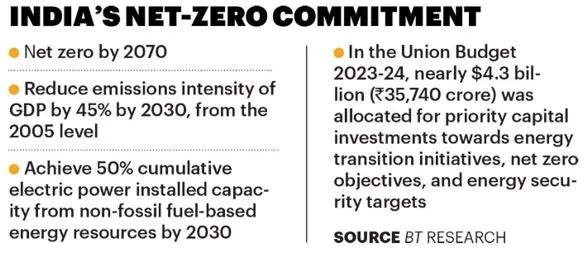

21st June 2024 (11 Topics)
Context
The recently released Energy Institute’s Statistical Review of World Energy shows that energy emissions rose by 2% in 2023, surpassing 40 gigatonnes of CO? equivalent for the first time.
Global Energy Consumption and Emissions
- Overall Increase: Global primary energy demand reached a record 620 Exajoules (EJ), marking a 2% increase from 2022 despite efforts to reduce fossil fuel dependency. Emissions intensified within the fossil fuels category, driven by rising oil and coal use alongside stable gas emissions.
- 1EJ is equivalent to about 170mn barrels of oil.
- Fossil Fuel Dominance: Fossil fuels constituted 5% of the global energy mix, despite a slight decrease from the previous year.
- Regional Shifts: In Europe, fossil fuel use dropped below 70% for the first time since the industrial revolution.
- Renewable Energy Growth
- Record High: Renewable energy generation (excluding hydro) surged by 13% to a new high of 4,748 terawatt-hours (TWh).
- Increased Share: Renewables now account for 8% of the global energy mix excluding hydro, up from 7.5% in 2022.
- Oil Consumption and Production
- Historic Milestone: Global oil consumption exceeded 100 million barrels per day (bpd) for the first time.
- Supply Dynamics: Non-OPEC+ producers, notably the U.S., drove oil supply growth with a 9% increase in output.
- Natural Gas and LNG
- Stability in Production: Global gas production and consumption remained stable, with LNG supply rising by nearly 2%.
- Leadership Shift: The U.S. surpassed Qatar as the leading global LNG supplier.
- Coal Consumption
- Continued Growth: Coal consumption hit a new high of 164 EJ, driven by increases in China and India.
- Regional Comparison: India’s use of fossil fuels climbed 8 per cent, with its coal consumption overtaking the combined use in North America and Europe for the first time.
Fact Box: India’s Energy Demand and Infrastructure:
|
Related PYQQ1: The question of India’s Energy Security constitutes the most important part of India’s economic progress. Analyze India’s energy policy cooperation with West Asian Countries. [2016] Q2: Give an account of the current status and the targets to be achieved pertaining to renewable energy sources in the country. Discuss in brief the importance of the National Programme on Light Emitting Diodes (LEDs). (2016) Q3: Clean energy is the order of the day.’ Describe briefly India’s changing policy towards climate change in various international for in the context of geopolitics. [2022] |



